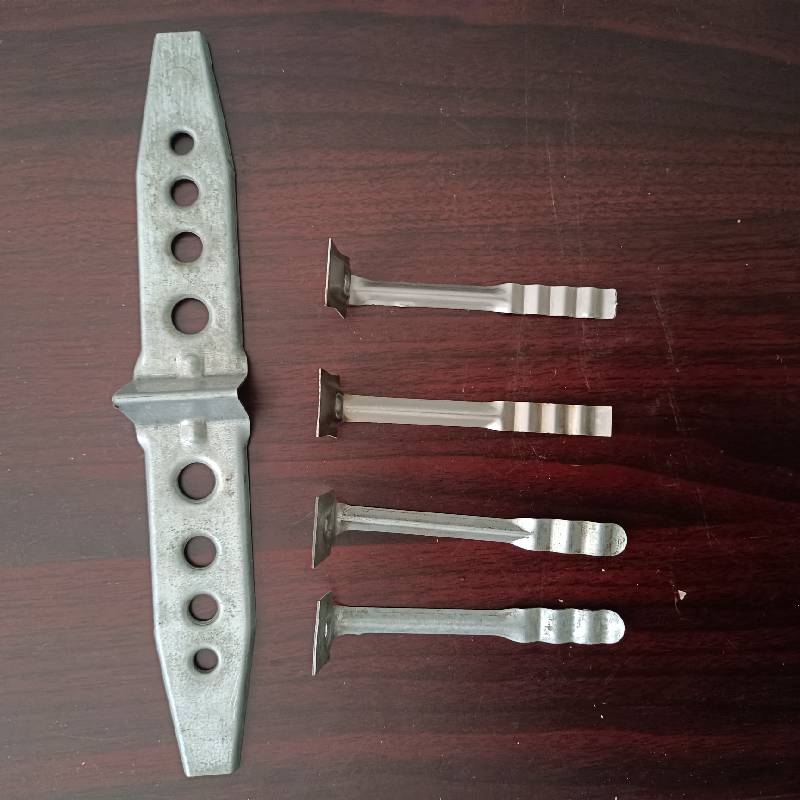
- Mobile Phone
- +8613931874955
- sales@cntcmetal.com
Understanding the Benefits of Stone Veneer Ties in Construction Applications
The Importance of Stone Veneer Ties in Construction
Stone veneers have gained immense popularity over the years as an aesthetic choice for both residential and commercial buildings. These thin slices of natural stone are typically adhered to a structural surface to provide the rich visual appeal of solid stone without the associated weight and cost. However, to ensure the durability and integrity of stone veneer installations, the use of stone veneer ties is critical.
What are Stone Veneer Ties?
Stone veneer ties are metal or plastic connectors that are used to anchor the stone veneer to the underlying structure. These ties play a crucial role in maintaining the stability of the veneer, preventing it from cracking or detaching from the wall due to environmental factors such as wind, temperature changes, or moisture. They are usually installed during the veneer application process, strategically placed to ensure even support throughout the surface area.
Types of Stone Veneer Ties
There are various types of stone veneer ties available, each designed for specific applications and materials. The most common include
1. Zinc-Coated Steel Ties Known for their strength and corrosion resistance, zinc-coated steel ties are commonly used in exterior applications. They provide excellent support and are less prone to rusting when exposed to the elements.
2. Plastic Ties For projects where metal ties may not be suitable, plastic ties offer a lightweight, non-corrosive alternative. These are particularly advantageous in areas with high moisture or where electrical conductivity is a concern.
3. Galvanized Steel Ties Like their zinc-coated counterparts, galvanized steel ties offer durability and resistance to corrosion, making them a popular choice for a variety of climate conditions.
4. Stainless Steel Ties For high-end applications or in areas that demand the utmost durability, stainless steel ties are often selected. They are highly resistant to rust and offer long-term performance.
Installation and Best Practices
stone veneer ties

Proper installation of stone veneer ties is critical to the success of any stone veneer project
. Ties should be spaced according to the manufacturer's recommendations and building codes. Common spacing is every 16-24 inches vertically and horizontally, but this can vary based on the weight of the stone and the structure it is secured to.When installing ties, it is essential to embed them securely in the substrate. This ensures the ties have the grip necessary to support the weight of the veneer. Additionally, proper sealing and flashing techniques should be employed to prevent moisture intrusion, which is a common cause of failure in veneer installations.
Benefits of Using Stone Veneer Ties
The use of stone veneer ties offers numerous benefits
1. Increased Durability Ties help ensure that the stone veneer remains securely fastened to the wall, reducing the risk of cracking or detachment.
2. Cost-Effectiveness By allowing the use of thin slices of stone, veneers reduce material costs while providing the same aesthetic value as solid stone.
3. Design Flexibility The lightweight nature of stone veneer, combined with the stability provided by ties, allows for a variety of architectural designs that may not be feasible with traditional stone applications.
4. Energy Efficiency Properly installed stone veneers can add an extra layer of insulation to buildings, potentially reducing energy costs for heating and cooling.
Conclusion
In conclusion, stone veneer ties are an indispensable component of modern stone veneer applications. They provide the necessary support and stability to ensure that the veneer remains intact over time, offering both aesthetic appeal and structural integrity. As the demand for stone veneers continues to rise, understanding the importance of these ties will be crucial for homeowners, builders, and designers alike. With proper selection and installation, stone veneer can enhance the beauty and durability of any building.
share:
-
Yard Sign Stakes: Reliable Guardians of Outdoor SignsNewsAug.04,2025
-
Wall Ties: Invisible Guardians of Building StabilityNewsAug.04,2025
-
Resilient Web: The Super Guardian Power of Concrete MeshNewsAug.04,2025
-
Masonry Accessories: A versatile assistant on building foundationsNewsAug.04,2025
-
Iron Binding Wire: the 'invisible reinforcement specialist' in the fields of architecture and industryNewsAug.04,2025
-
Dynamic Spring: The diverse functions and excellent performance of Wire Tension SpringNewsAug.04,2025
-
Your Source for Concrete Wall Ties and Masonry AccessoriesNewsJul.10,2025



















